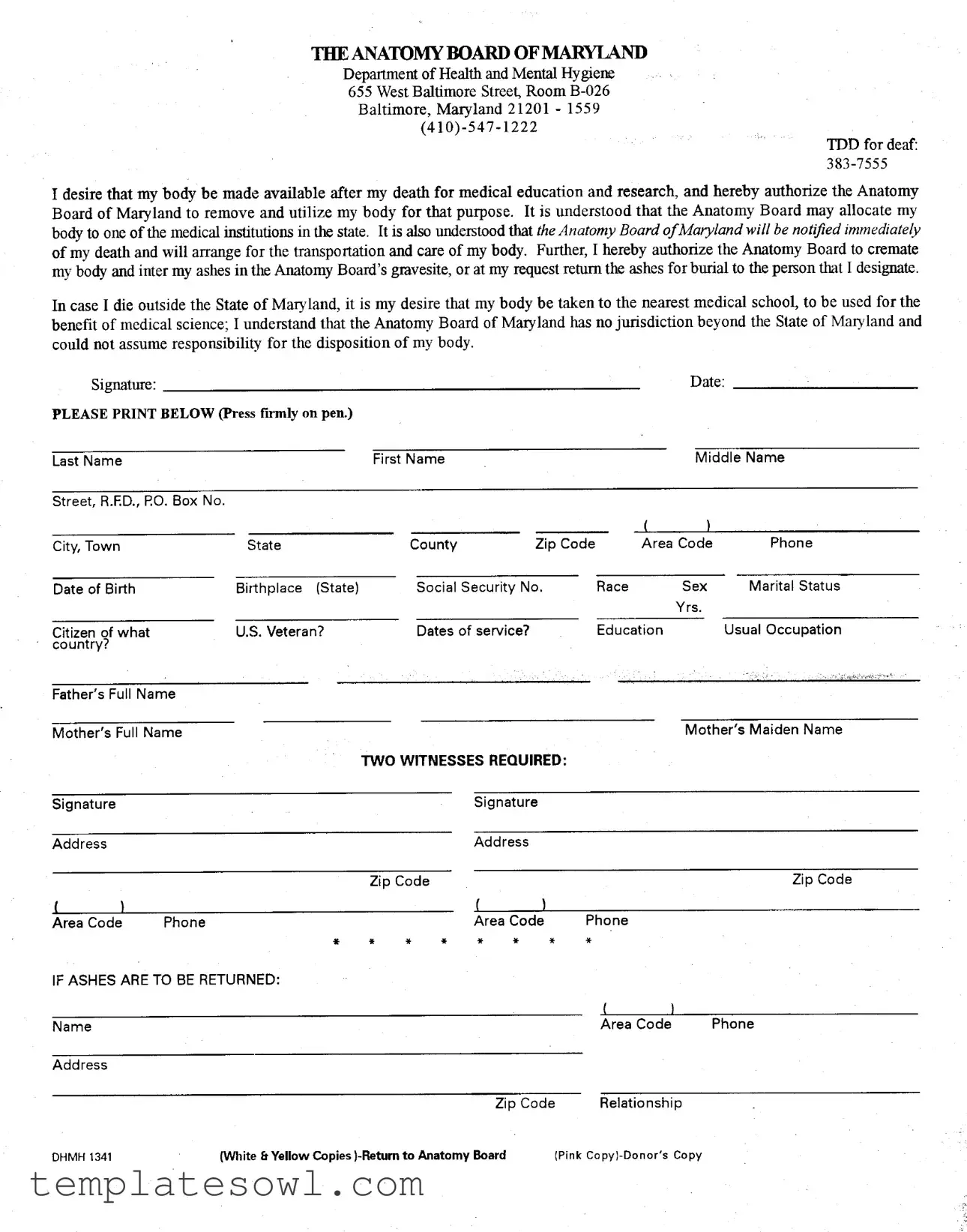Completing the Maryland Anatomy form can be a straightforward process, but many individuals make mistakes that can cause confusion or delays. One common error is leaving out required fields. The form asks for specific information, including your last name, date of birth, and contact information. Omitting any of these details can lead to the rejection of your application.
Another frequent mistake is failing to sign the form. Without a signature, the Anatomy Board cannot process your request. This oversight may seem minor, but it is crucial for ensuring that your wishes are legally documented. Make sure to review the form and verify that all necessary signatures are included before submission.
Many people also neglect to provide witness signatures. The form requires two witnesses, and their signatures are essential to validate your intent. Failing to include witnesses can render the form incomplete. Check to see that all witness information is accurately filled in, including their names and contact details, to avoid any issues.
A misunderstanding about the cremation option is another mistake that can occur. When signing the form, it’s important to clearly indicate whether you wish for your ashes to be returned or interred. Miscommunication on this detail can create problems at a sensitive time. Be sure to specify your choice explicitly on the document.
In addition, people sometimes fill out the form without checking for accuracy. Transposing numbers or misspelling names can occur when rushing through the process. Such errors could lead to misunderstandings about your identity and intentions. This simple step of proofreading can save you a great deal of trouble later.
Some individuals forget to specify how to handle their remains if they pass away outside Maryland. It’s crucial to indicate your desire for your body to be sent to the nearest medical school. Neglecting this can hinder the Board's ability to fulfill your wishes, especially during urgent situations.
Another mistake involves the personal details section. Individuals might be unsure about how to fill in the “Citizen of what country?” section or overlook providing accurate details about their marital status, race, or veteran status. Each piece of information serves a purpose and helps clarify your situation to the Anatomy Board.
Lastly, many applicants are unaware of the necessity for clarity regarding the return of ashes. If you wish the ashes to be returned to a specific person, providing their details accurately is paramount. Missing this vital piece of information can lead to delays and cause anxiety for family members later on.
By being aware of these common mistakes, you can ensure that your experience with the Maryland Anatomy form is smooth and respectful of your wishes. Attention to detail will help you navigate the process with ease, ensuring your intentions are honored.

